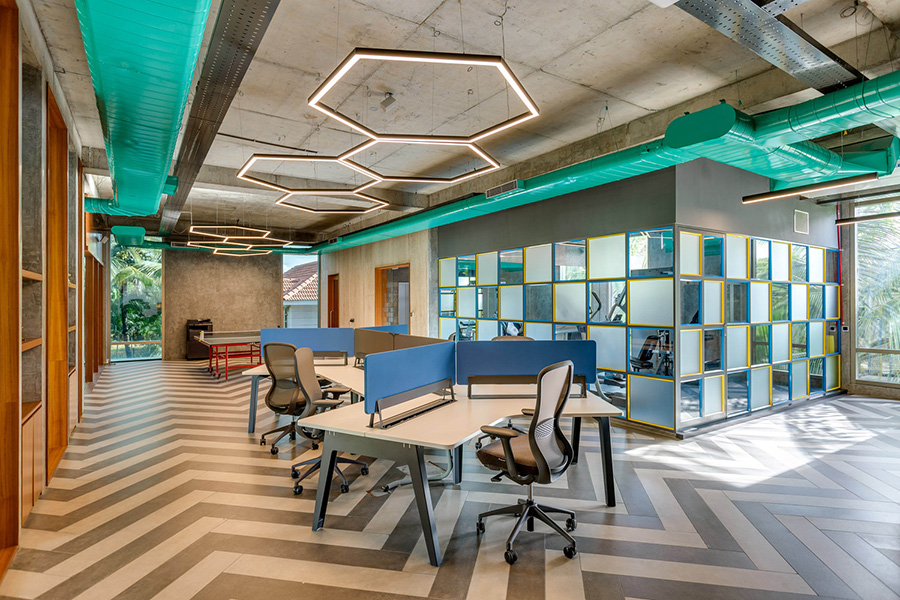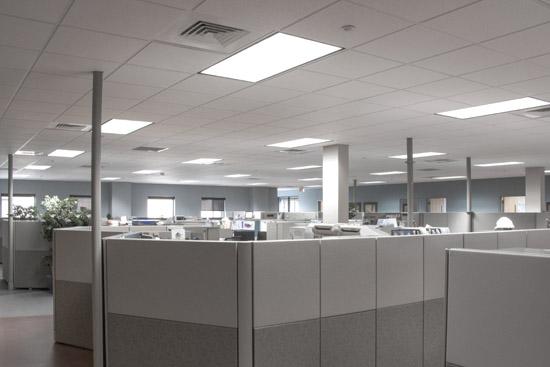In recent years, there has been a growing trend in office lighting fixtures toward more energy-efficient options. This is due to both the rising cost of electricity as well as a greater awareness of the environmental impact of traditional lighting sources such as incandescent bulbs. As a result, many businesses are now looking to switch to commercial office lighting fixtures that use less energy and produce fewer emissions.
There are several different types of energy-efficient lighting fixtures available on the market today. One popular option is LED (light emitting diode) lights. These lights use significantly less power than traditional incandescent bulbs, and they also last much longer, making them a cost-effective option for businesses.
Another popular type of energy-efficient lighting is compact fluorescent (CFL) bulbs. CFLs also use less power than traditional incandescents, but they do not last as long as LEDs.
If you’re looking for commercial office lighting fixtures, there are a few things to keep in mind. First, you’ll want to consider the type of light fixture that will best suit your needs. There are many different types of commercial office lighting fixtures on the market, so it’s important to do your research and find the one that will work best for your space.
Secondly, you’ll want to take into account the size of your space when selecting commercial office lighting fixtures. Make sure to measure the area before purchasing so that you know what size fixtures will fit perfectly. Lastly, don’t forget to factor in your budget when choosing commercial office lighting fixtures.
There are many affordable options available, so be sure to shop around and compare prices before making a final decision. With these tips in mind, finding the perfect commercial office lighting fixtures should be a breeze!

Credit: www.alconlighting.com
What Type of Lighting is Best for Office Work?
The type of lighting that is best for office work depends on the type of work being done. For example, if you are working on a computer, you will need a light that is bright enough to see the screen clearly without causing glare. If you are doing paperwork, you will need a light that is bright enough to see the paper clearly without causing eye strain.
Many different types of lights available can be used for office work. Some of the most popular options include incandescent bulbs, fluorescent bulbs, and LED bulbs. Each type has its advantages and disadvantages.
Incandescent bulbs are the traditional type of light bulb. They produce a warm, yellowish light that is easy on the eyes. However, they are not very energy-efficient and can get quite hot, which can be a problem in small offices.
Fluorescent bulbs are more energy-efficient than incandescent bulbs and they give off a cool, white light. However, they can flicker and buzz, which can be distracting. They also contain mercury, which is harmful to the environment if they break or are disposed of improperly.
LED bulbs use less energy than both incandescent and fluorescent bulbs and they last much longer as well – up to 50 times longer! They also give off a cool, white light that doesn’t flicker or buzz as fluorescent lights can.
What Type of Lighting is Used in Offices?
There are a few different types of lighting that are commonly used in offices. These include fluorescent lights, LED lights, and incandescent lights. Each type of light has its benefits and drawbacks.
Fluorescent Lights: Fluorescent lights are very energy efficient and have a long lifespan. They also emit a lot of light, which can be helpful in large office spaces. However, they can also flicker and produce a harsh glare.
LED Lights: LED lights are even more energy efficient than fluorescent lights and they don’t flicker or produce glare. They also come in a variety of colors, which can be used to create different atmospheres in an office space. The only downside to LED lights is that they can be expensive to purchase initially.
Incandescent Lights: Incandescent lights are the traditional type of light bulb. They aren’t as energy efficient as fluorescent or LED lights, but they are less expensive to purchase upfront. Incandescent bulbs also emit a warm light, which can be inviting in an office space.
What is the Required Illumination for Commercial Areas?
There is no one answer to this question as it varies depending on the specific commercial area in question. However, in general, most commercial areas require an illumination level of at least 30 lux (3 foot-candles). This is typically achieved with a combination of natural and artificial lighting.
What are the Four Types of Lighting Fixtures?
Lighting fixtures are a necessary part of any home. They provide illumination for tasks, accent décor, and create an overall atmosphere in a space. There are four main types of lighting fixtures: ceiling lights, wall lights, floor lamps, and table lamps.
Each type has its unique benefits and drawbacks that should be considered when selecting lighting for your home. Ceiling lights are perhaps the most common type of lighting fixture. They can be flush-mounted to the ceiling or hung from a chain or rod.
Ceiling lights provide general illumination for a room and are often used in combination with other types of light fixtures. One drawback of ceiling lights is that they can be difficult to change if you want to update your space later on. Wall lights are another popular option for indoor lighting.
Wall sconces and wall lanterns can add both ambient and task lighting to a room. They’re typically installed at eye level, which makes them ideal for reading or other close-up tasks. However, wall lights can take up valuable space on small walls or in tight areas.
Floor lamps come in a variety of styles and sizes, making them versatile pieces that can be used in nearly any space. Tall floor lamps work well next to sofas or chairs, while shorter ones can be placed behind end tables or desks. Floor lamps cast downward light, so they’re perfect for reading nooks or other areas where you need focused light without harsh overhead glare.
As with ceiling lights, changing a floor lamp bulb can be challenging if it’s located in an awkward spot. Table lamps offer another way to add focused light to a room without sacrificing style. These days, there are endless options when it comes to table lamp design—from sleek modern looks to more traditional styles with colorful shades.
Table lamps are easy to move around as your needs change (unlike ceiling lights), but they do require an open surface nearby—such as an end table, nightstand, or side table.
The HP4 Indirect/Direct LED Linear Suspended Office Lighting Fixture
Led Office Lighting Fixtures
If you’re looking for a more energy-efficient and cost-effective lighting solution for your office, LED office lighting fixtures are a great option. LED lights use less energy than traditional incandescent or fluorescent bulbs, and they last much longer – up to 50,000 hours! That means you’ll save money on your energy bills and replacement bulbs over the long run.
LEDs also provide better quality light than other types of bulbs. They emit a bright, white light that is perfect for workspaces. And because they don’t produce any heat, they won’t add to the ambient temperature in your office – making it more comfortable for employees during those hot summer days.
If you’re ready to make the switch to LED office lighting fixtures, there are a few things to keep in mind. First, LEDs come in different “temperatures,” measured in Kelvin (K). The lower the Kelvin rating, the warmer the light will be; higher Kelvin ratings mean cooler, brighter light.
Most offices do well with a 3000K or 4000K LED bulb. Next, consider the beam angle of the fixture. This is important because it will determine how wide or narrow the area of light will be.
A wider beam angle is ideal for general lighting purposes, while a narrower beam angle can be used to highlight specific areas like artwork or signage. Finally, make sure to choose an LED fixture that is compatible with any dimmer switches you might have installed in your office space.
Conclusion
In today’s office environment, good lighting is a must. There are many different types of commercial office lighting fixtures available to choose from. Here is a summary of some of the most popular types:
Fluorescent Lighting – This type of lighting is very energy efficient and can be used in a variety of settings. It is often used in offices because it provides bright, even light that helps reduce eye strain. LED Lighting – LED lights are becoming more popular in all types of settings, including office environments.
They are very energy efficient and last much longer than traditional light bulbs. They also emit little heat, making them ideal for use in areas where temperature control is important. Task Lighting – Task lighting is designed to provide focused light on a specific area.
This can be helpful when working on projects that require precision or when using computers for extended periods. Natural Light – Many people prefer to work in an environment with natural light whenever possible. If your office has windows, you may want to consider installing blinds or curtains that can be adjusted to let in as much or as little light as you need.

